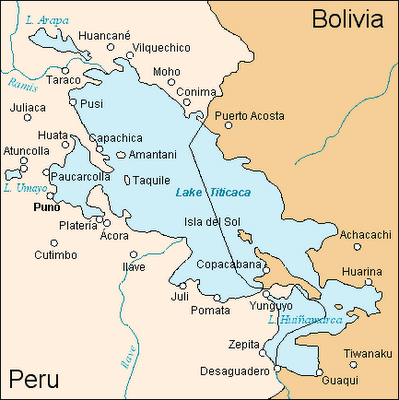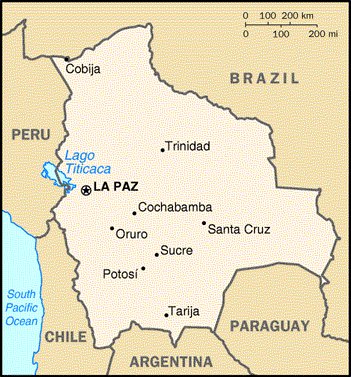Although Bolivia lies entirely within tropical latitudes, climatic conditions vary widely from tropical in the lowlands to polar in the highest parts of the Andes. Temperatures depend primarily on elevation and show little seasonal variation. In most locations, rainfall is heaviest during the Southern Hemisphere summer, and yearly amounts tend to decrease from north to south.
Northern lowland areas have a tropical wet climate with year-round high temperatures, high humidity, and heavy rainfall. Daytime highs average more than 30° C all year in most locations. The rain-bearing northeast trade winds, blowing across the Amazon Basin, bring significant rainfall amounts. Rain often falls in brief thunderstorms, sometimes accompanied by strong winds and hail.
Central lowland areas have a tropical wet and dry climate. From October through April, northeast trade winds predominate, and the weather is hot, humid, and rainy. From May through September, however, dry southeast trade winds take control, and precipitation is minimal. During this season, clear days and cloudless nights allow for higher daily maximums and lower nightly minimums than occur during the rainy season. Occasional incursions of strong winds from the south, called surazos, can reach this region during winter and bring cool temperatures for several days.
The Chaco has a semitropical, semiarid climate. The northeast trade winds bring rain and hot humid conditions only from January through March; the other months are dry with hot days and cool nights. Bolivia's highest maximum temperature, 47° C, was recorded here. Surazos also affect the Chaco; their approach is usually signaled by a squall line.
Temperatures and rainfall amounts in mountain areas vary considerably. The Yungas, where the moist northeast trade winds are pushed up by the mountains, is the cloudiest, most humid, and rainiest area, receiving up to 152 centimeters annually. Sheltered valleys and basins throughout the Cordillera Oriental have mild temperatures and moderate rainfall amounts, averaging from 64 to 76 centimeters annually. Temperatures drop with increasing elevation, however. Snowfall is possible at elevations above 2,000 meters, and the permanent snow line is at 4,600 meters. Areas over 5,500 meters have a polar climate, with glaciated zones. The Cordillera Occidental is a high desert with cold, windswept peaks.
The Altiplano, which also is swept by strong, cold winds, has an arid, chilly climate, with sharp differences in daily temperature and decreasing amounts of rainfall from north to south. Average highs during the day range from 15°C to 20°C, but in the summer tropical sun, temperatures may exceed 27° C. After nightfall, however, the thin air retains little heat, and temperatures rapidly drop to just above freezing. Lake Titicaca exerts a moderating influence, but even on its shores, frosts occur in almost every month, and snow is not uncommon.




